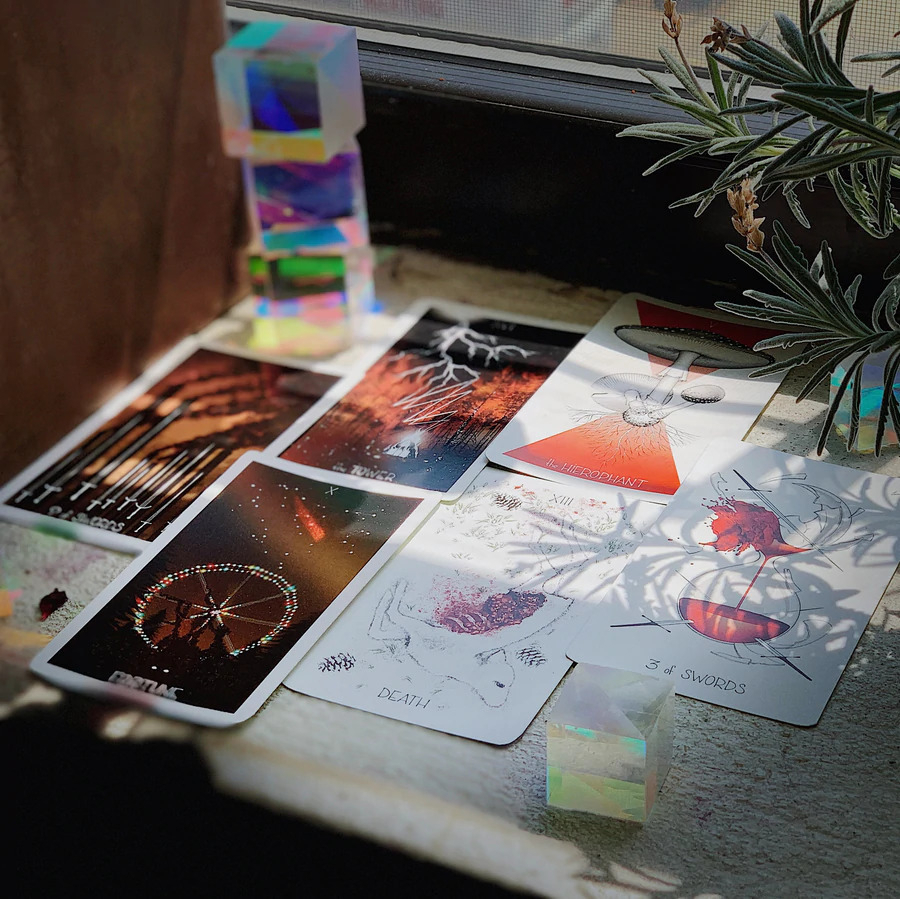My sense of routine and timing and goal-setting has been completely exploded over the past month or so. The routines I put in place to help me cope in the face of my mom’s illness weren’t really doable last week because M was home from school Wednesday through Friday for a teacher workday and conferences. Just today am I beginning to claw some of that structure back.
Today I did morning pages. I did a tarot reading for Pisces season. (The overall gist was one of recognizing abundance, not worrying where it would come from, and letting go of the need to try to create a perfect balance.) I had a smoothie. I filled one of my three medicine cases. (Two more to go!)
I cleared several small items off my to-do list. Soon, I will get down to work-work, continuing to analyze the documentation that’s going to help us develop a typology of the challenges library staff face when implementing connected learning.
I’ve had headaches almost continuously for a few weeks, partly due to hormone shifts, but maybe also partly due to stress. I had two cycles where I thought my body had sorted out my PCOS a little bit but here we are on Day 44, no new cycle in sight (a normal menstrual cycle is 40 or fewer days long from the beginning of one period to the beginning of the next). This is fine, or rather, not catastrophic. But disappointing.
I spoke with my doctor the other day. My Hemoglobin A1C is high - that’s the number that says how my blood sugar has been over the course of the past few months, as opposed to the glucose measurement that really only tells you about the past 24 hours or so. (That one was high-normal.) My LDL cholesterol was high, too - but total and triglycerides were good, so let’s celebrate that!
My doctor recommended two new supplements and I asked about a third. One of the ones she recommended was corn silk for kidney function. When I eat things with whole corn, corn flour, or corn meal in them, I get joint pain. I’m going to try the corn silk and see how it goes, but am prepared to stop it quickly if it causes pain and ask her for other possibilities.
She also recommended berberine for cholesterol and blood sugar, and agreed with me that it would be good to try GABA to improve the quality of my sleep. And she said it was smart of me to up my l-tyrosine when I noticed clinical signs of declining thyroid function (increased fatigue and decreased body temperature).
I write about these things because my life is a constant set of calculations relating to how to handle different conditions and the fact that my health will never be “fixed.” Chronic illness is not a problem to be solved; it is a condition to be managed.
I bought this Art Oracles card deck at the North Carolina Museum of Art when we were there to see the Mucha exhibit in December and I keep the Frida Kahlo card pinned on my corkboard because it says, “Convalescence lasts a lifetime” and that is something I need to keep in mind.

I don’t expect I’ll ever get a tattoo, but inspired by both my own experiences with chronic illness and having recently read Ninth House, if I ever did, I think it would be the tarot Wheel of Fortune, and probably the Wayhome Tarot version.

(That picture is from the Everyday Magic website.)
The thing is, wherever you are on the Wheel, three things are true:
- At some point, things will be better than they are now.
- At some point, things will be worse than they are now.
- You will be back here again.
It would be good for me to keep these truths in mind at all times.
